Pasta al Limone translates to Lemon-Scented Pasta. It hails from the Naples/Amalfi Coast area of Italy, where they grow the finest lemons in the world. It’s simple, fast, and delicious. Pasta al Limone makes an exquisite meal with a simple salad, but sometimes I don’t even bother with the salad. Either way, it’s impossible to eat Pasta al Limone without perking up considerably.
Pasta al Limone has only a few ingredients, and you may have them on hand already. Spaghetti noodles, olive oil, butter, lemon, parmesan cheese, salt and pepper. That’s it. Make it once, and you’ll know the recipe by heart.
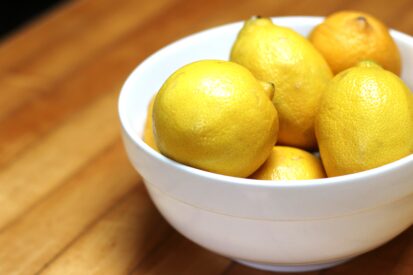
Use real lemons–you’ll be using the zest as well as the juice. And please grate a block of parmesan instead of using any parmesan that’s pre-grated or already shredded. I’m not a parmesan snob, and I promise I have the kind in the green can on my refrigerator door at all times. The problem is that pre-grated parmesan has cellulose added to prevent caking. Cellulose isn’t a big, scary, ingredient, but it does coat the cheese particles to prevent them sticking together in the package. Unfortunately, it also prevents the cheese particles from melting together to form a smooth sauce. That’s why it’s a no-no here.
I recommend dried spaghetti rather than fresh pasta for this. Dry pasta yields a wonderfully starchy pasta water, and you’re going to need it. If you don’t already know, pasta water is a magical substance. It’s simply the water you’ve salted and boiled the pasta in, but don’t just pour it out! Ladle some into a jar or measuring cup before you drain the pasta. Starchy pasta water is what emulsifies the Pasta al Limone sauce.
Once upon a time we boiled multiple pounds of pasta in batches several times a week at the catering shop. When the first batch was done, we’d use tongs or a spider to get the pasta out of the pot, and we’d add the next batch to the same water. After about 8 pounds of pasta, we’d have pasta water so starchy you couldn’t see through it. We’d put it in quart containers, label it “pasta water of the gods”, stick it in the fridge, and use it anytime a sauce needed loosening up, a soup needed water, etc, etc. While I rarely have pasta water of the gods these days, I still have pasta water in my fridge on a regular basis. It makes any soup or sauce that calls for water silky and wonderful. Put it in the back of the fridge, and use it within two weeks. Shake it up before you use it.
Pasta al Limone comes together very quickly. Have your ingredients ready to go before you start. Nothing is difficult, but the timing matters. (Notice the absolutely terrible photos of the Pasta al Limone in progress on the stove. I didn’t dare take the time to move the skillet to an area with better lighting–next time I’ll use a stand-alone burner somewhere where the light is acceptable. <sigh>) When you get to the tossing part, toss and toss and toss until the parmesan has all melted and there are no more clumps. The pasta will soak up most of the sauce, making the noodles themselves oh-so flavorful. Garnish with lemon zest and as much more parmesan as you can stand. YUM!
Easy peasy lemon squeezy!
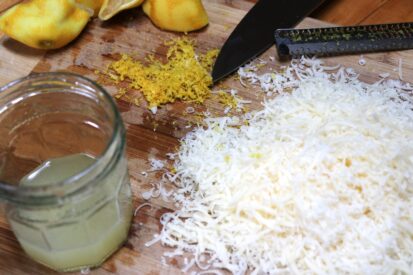
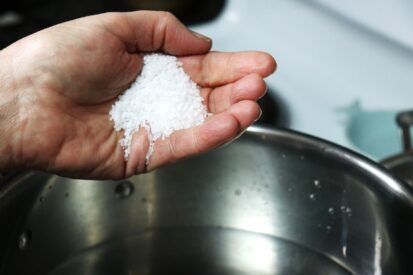
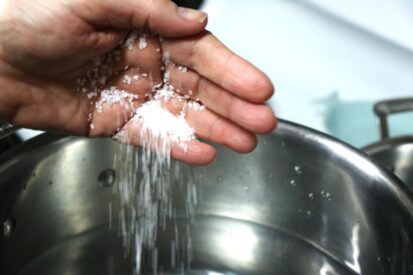
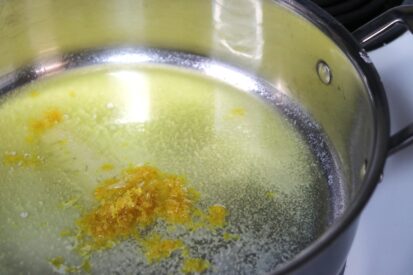
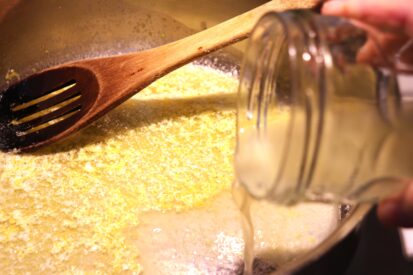
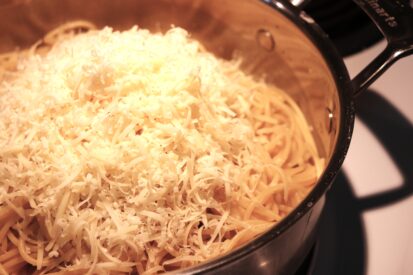

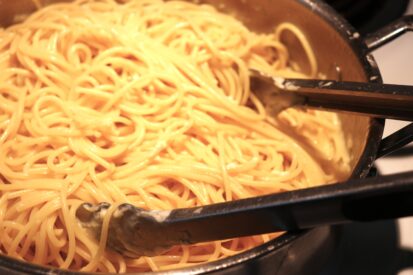
Pasta al Limone
Ingredients
- 1 lb. spaghetti, linguini, or similar long pasta
- salt
- 6 T. butter
- 3 lemons-- 2 zested and juiced, the third for garnish
- 1 cup freshly grated parmesan cheese, plus more for serving
- pasta water
- salt and freshly ground black pepper
Instructions
- Cook the pasta in salted water. The water should taste as salty as sea water. You're going to cook the pasta 2 minutes less than the package directs. Using a ladle, carefully dip 1 cup of pasta water out, set aside. Drain the pasta.
- While the pasta is cooking, melt the butter in a large skillet over low heat. Add the lemon zest. Allow the zest to cook gently in the butter for 2 or 3 minutes. Add the lemon juice and cook a couple of minutes more. Remove the skillet from the heat until the pasta is done.
- Working very quickly, put the skillet back on the heat and immediately add the just-drained pasta to the lemony butter in the skillet. Add ½ cup of the hot pasta water, cheese, and several grinds of black pepper. Using tongs toss the pasta briskly over and over as the cheese melts. The sauce will emulsify and get creamy. The pasta will absorb most of it. Taste for seasoning and add more salt and pepper if needed. If the pasta looks a little dry, you can add a little more pasta water a tablespoon at a time.
- Put hot pasta in a serving bowl and serve with more cheese, cracked black pepper, and lemon wedges.
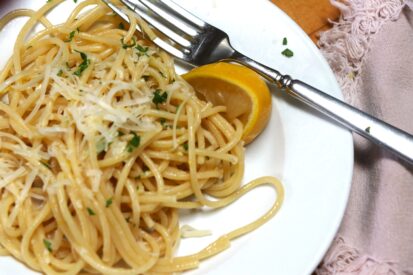
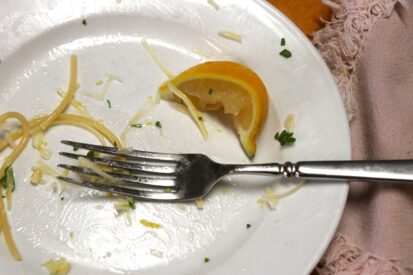

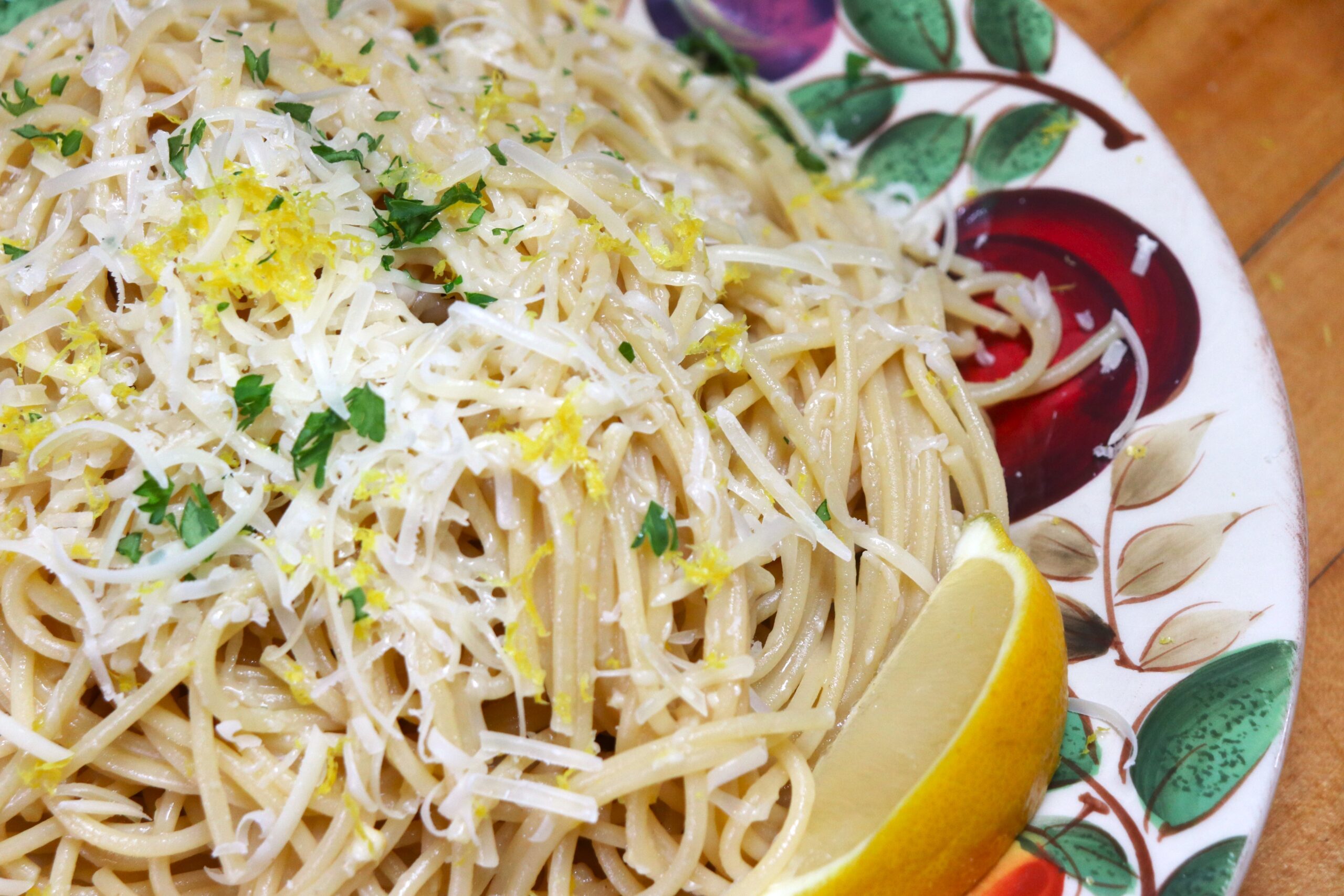
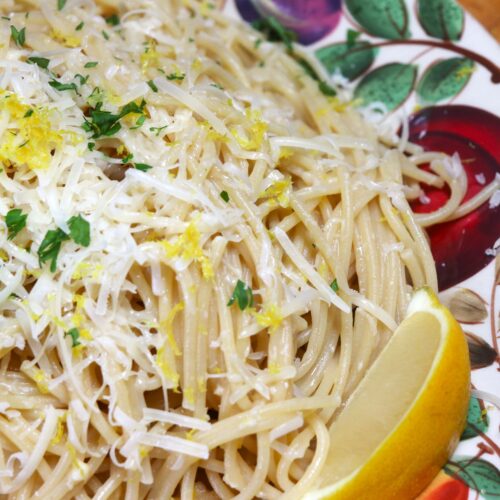












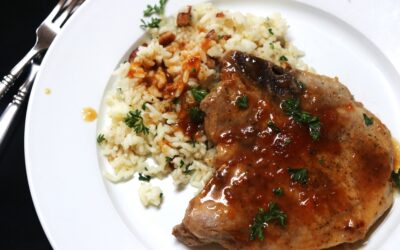
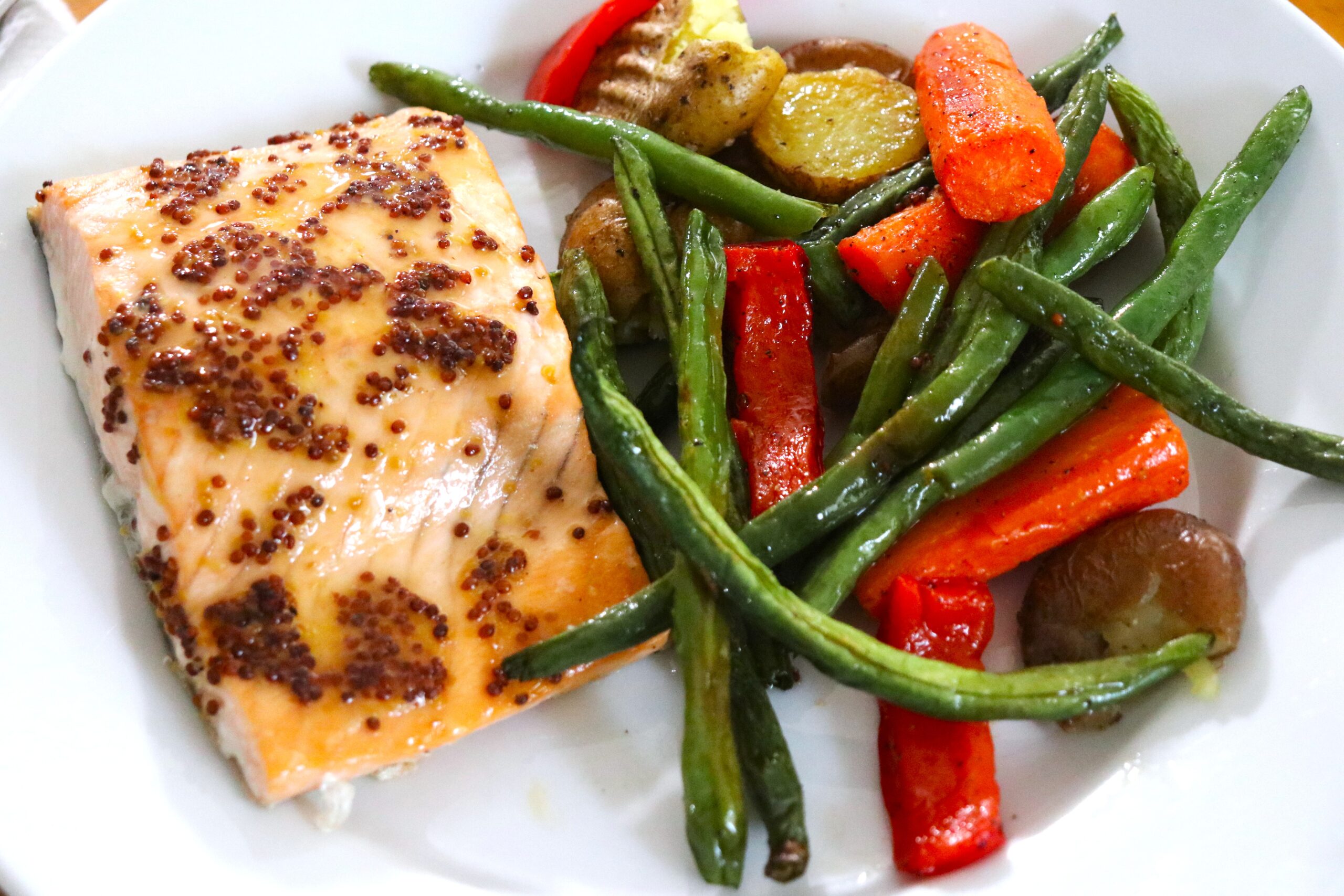
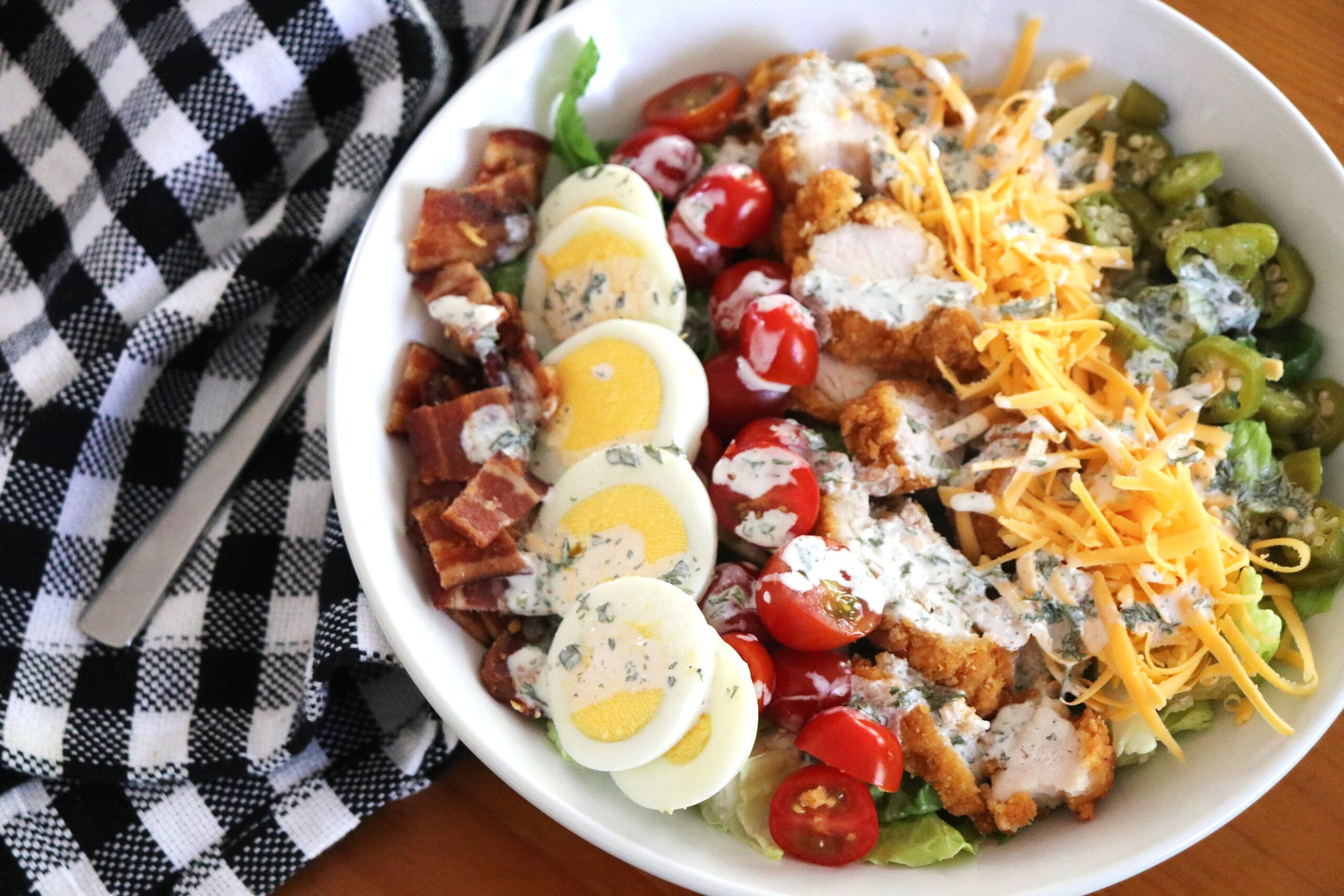

Sounds fantastic. I might throw some fresh spinach in there, too. Perfect for lent.
Exactly!